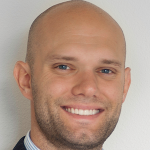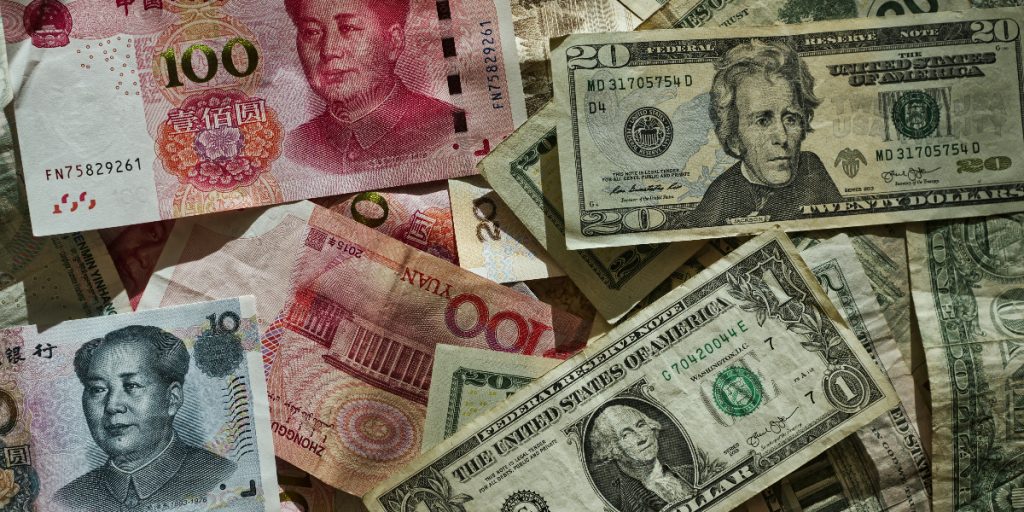Below, co-authors Quico Toro and Moisés Naím share five key insights from their new book, Charlatans: How Grifters, Swindlers, and Hucksters Bamboozle the Media, the Markets, and the Masses.
Quico has been a journalist for 25 years and currently serves as the global opinion columnist for the Washington Post. Moisés is a distinguished fellow at the Carnegie Endowment for International Peace and was the editor in chief of Foreign Policy magazine for over a decade.
What’s the big idea?
There have always been hucksters and grifters out there, but something has shifted in the last few years: a wider variety move among us. In addition to all-time classic schemes—get rich quick, perfect health—recent transformations of technology and society have unlocked a lot of new opportunities for charlatans to target us. Protect yourself by learning to spot the patterns.
Listen to the audio version of this Book Bite—read by Quico—below, or in the Next Big Idea App.

1. A charlatan is not a fraudster.
A fraudster or scammer doesn’t burrow into your life the way a charlatan does. The former two deceive you, take your money, and then take off. Charlatans have a way of creating lasting relationships that come to occupy the center of their marks’ social world. Charlatans’ most fervent defenders are the people they exploit the most.
A charlatan is a public figure who weaponizes your beliefs against you, creating a lasting, manipulative relationship. Charlatans claim to have access to special, mystical, or hidden knowledge to cement their hold over their followers. Charlatans always manipulate their followers to act in ways that are contrary to their own interests.
2. Spotting charlatans who appeal to others is easy, but it’s hard to spot the charlatans who appeal to us.
We hear these amazing stories of charlatans, and it just seems like such an obvious scam that it’s hard to imagine how someone gets taken in. We hear about people getting swindled by Televangelists, and it’s so obvious to the rest of us! But it’s not to evangelicals because they believe. People are vulnerable when they believe.
Almost everyone has one or two core beliefs that they just can’t stand to see questioned. Charlatans gain our trust by giving voice to those deep commitments. And it’s incredibly hard to stay skeptical when we hear a charismatic voice championing our truth. That’s why we’re all vulnerable. Because we all have that one thing we can’t stand to question. When we hear people pander to those things, we can’t help but trust them.
“A charlatan can weaponize your dreams against you.”
Charlatans never set out to persuade their marks. They’re not in the business of changing minds. They’re in the business of exploiting what you already believe: your most intimate, passionate commitments. We call those kinds of beliefs dreams. A dream can be anything. If you’re on the left, maybe it’s racial reconciliation. If you’re on the right, it may be national greatness. Either way, a charlatan can weaponize your dreams against you.
But usually, people’s dreams aren’t political: it’s the dream of perfect love! Of getting rich without effort! Of perfect healing from trauma! Of communing with aliens! And—the one that started it all—the patient’s dream of having their health restored. It doesn’t really matter what the dream is. If there’s an idea you can’t let go of, there’s a charlatan out there willing to exploit it.
3. Confirmation bias runs so deep.
One of the most consistent findings in social psychology is that we love to be proven right and actively resist evidence that suggests we might be wrong. Researchers call this “confirmation bias,” and it runs deep. Especially when it comes to beliefs that really matter to us, we find it much easier to accept evidence that confirms them than to consider evidence that might suggest we’re wrong. There have been literally hundreds, if not thousands, of studies exploring the various ways confirmation bias affects our thinking.
A charlatan is just someone who noticed that and thought, “I can work with that! If people love to hear their beliefs confirmed and hate to hear them refuted, then I can get them to trust me just by confirming their beliefs!” Confirmation bias happens automatically, before we’re even aware of it. It’s not a mistake we make, it’s who we are. Which is why there will probably always be charlatans around.
4. We’re about to meet a lot more charlatans.
As of 2024, there were approximately 5.22 billion social media users worldwide. The American Psychological Association estimates that 0.3 to 0.7 percent of women and 1.2 percent of men exhibit significant psychopathic traits. A smaller percentage of the population, possibly 0.2 percent, shows signs of the dark triad, which combines aspects of antisocial personality disorder with Machiavellianism (viewing others as objects to be manipulated, often through deception) and narcissism (excessive self-love or egocentrism).
“Something like ten million social media users exhibit all the traits of the dark triad.”
Though “psychopath” isn’t really a term psychiatrists use anymore, the dark triad gets at the core of what people colloquially mean by “psychopath.” Multiply those numbers together, and something like ten million social media users exhibit all the traits of the dark triad. Not all of them will become charlatans, but enough will try. We will certainly encounter charlatans more frequently in our increasingly hyperconnected world.
5. Proven charlatans—and how to escape them.
At the heart of the book are stories of specific charlatans:
- Mehmet Aydın
The young Turkish IT huckster behind the infamous “Farm Bank” (Çiftlik Bank) scheme, a massive Ponzi scheme that leveraged a Farmville-like app to swindle approximately $250 million from 132,000 investors. He enticed investors with promises of “mind-blowing” returns from supposed real-world farming operations, paying early investors with money from newer ones, mirroring the tactics of Charles Ponzi. Aydın masterfully exploited the “HumanOS” vulnerability of social proof and confirmed the dreams of urban Turks nostalgic for a rural past, playing patriotic TV commercials with beloved movie stars and nationalist slogans to build trust. His operation was digital, viral, and scalable, expanding internationally, while he maintained a lavish lifestyle with investor money, including private jets, mansions, and luxury cars. The scheme collapsed when its fraudulent financial practices came under scrutiny, leading Aydın to flee the country, though he later surrendered and was sentenced to 45,376 years in prison.
- Baba Ramdev
Baba Ramdev, born Ram Kisan Yadav, is an Indian yogi and “god-man” who transformed his image as a religious ascetic and breathwork teachings (pranayama, particularly kapālabhāti) into a billion-dollar consumer goods empire, Patanjali Ayurved. He leveraged ubiquitous TV appearances and Indian nationalism (Hindutva) to market products, positioning them as holy, healthier alternatives to Western brands, and monetizing Hindu piety by emphasizing devotion and sacrifice. Ramdev made extravagant, unproven claims about his products and practices, including curing everything from headaches to cancer and even COVID-19, leading to legal challenges and accusations of misinformation. His success, despite all the controversies, shows how charlatans exploit deep-seated dreams, national identity, and social proof on a massive scale.
- Mamugna
Mamugnà was an official alchemist elected by the Venetian senate in 1589, during a fiscal crisis, with the hope that he could turn base metal into gold. He cultivated an air of mystery and enormous wealth, performing a sleight-of-hand demonstration to convince them of his alchemical abilities. Mamugnà ruthlessly exploited the noblemen’s dream of restoring Venice’s glory, living a decadent life at the city’s expense for years. He eventually fled Venice, was captured, confessed his deception, and was executed. 450 years ago, all the elements of the charlatan’s art were already at his command.
- Sam Bankman-Fried
Sam Bankman-Fried (SBF) founded the crypto exchange FTX and its sister hedge fund, Alameda Research, orchestrating a massive scheme that cost investors billions in losses. He cultivated a public image as an “Effective Altruist” and even advocated for crypto regulation, gaining the trust of sophisticated investors. However, Alameda secretly gambled with billions of dollars of FTX customer funds, which were supposedly safeguarded, but ended up bringing his entire crypto empire tumbling like a house of cards. Bankman-Fried was ultimately convicted on multiple counts of fraud and conspiracy and sentenced to 25 years in federal prison.
- Brian Kolfage
Brian Kolfage is a Purple Heart recipient and Air Force veteran who lost three limbs in an accident in Iraq. He leveraged his patriotic image to launch a network of websites that spread fake news and conservative clickbait. He then created the “We Fund the Wall” GoFundMe campaign, promising to privately fund the construction of a border wall, which raised millions of dollars from donors. Despite assuring that all funds would go to the wall, Kolfage was found to have personally profited from the donations. He later pleaded guilty to conspiracy charges related to the fraudulent scheme and was sentenced to 51 months in federal prison.
- Bentinho Massaro
Bentinho Massaro is a Dutch guru who leveraged his social media presence and fashion influencer image to launch a group of spiritual seekers he turned into his own personal harem. He attracted followers with vague, “word salad”- like spiritual teachings and promises of enlightenment and communion with alien spiritual beings from distant galaxies. Massaro exploited his marks through expensive retreats and alleged patterns of emotional, financial, and sexual abuse. He kept control by labeling any criticism or doubt as “demonic possession.” His digital-first approach allowed him to target thousands and winnow them down into a hard core of devotees to exploit, leading to legal complaints for allegedly silencing victims.
So, how can people protect themselves from charlatans? The trick is to identify the beliefs you’re not willing to question. Because that’s the lever a charlatan is going to pull. It’s really hard to question your own dreams, hold them at arm’s length, and see them the way a charlatan does: as a vulnerability. The trick is to be aware of what those beliefs are and then set a kind of mental tripwire: tell yourself that when a pitch flatters your beliefs a little too smoothly, you’re going to take a deep breath and think twice. The very fact that it feels irresistible is the warning. If you spot the manipulation early, you can keep your wits about you. If you don’t, you’re easy prey.
Enjoy our full library of Book Bites—read by the authors!—in the Next Big Idea App:





























